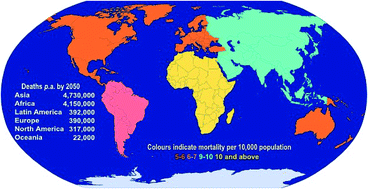Novel diagnostics for point-of-care bacterial detection and identification
Abstract
In addition to limiting the effectiveness of antimicrobial agents, antimicrobial resistance (AMR) is a significant global health concern as it is responsible for significant mortality/morbidity and increased economic burdens on healthcare systems. Diagnostic tests have been suggested as a means of prolonging the effectiveness of current antimicrobials; culture and other conventional diagnostics are hindered in their practicality as they are time- and labour intensive to perform. Point-of-care (POC) testing is performed near where the patient is being treated and can provide timely results that allow evidence based clinical interventions to be made. This review aims to outline the chemical principles behind some novel and emerging diagnostic techniques which have the required speed, simplicity, effectiveness and low-cost for incorporation into POC devices which can be used to inform and optimize antimicrobial use.

- This article is part of the themed collection: Chemistry in the battle against infections


 Please wait while we load your content...
Please wait while we load your content...